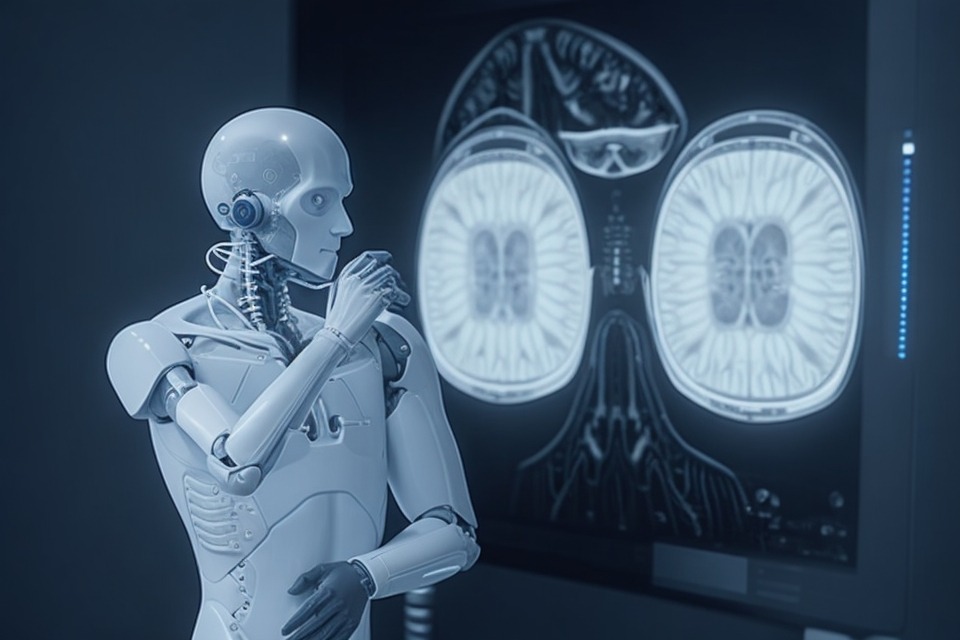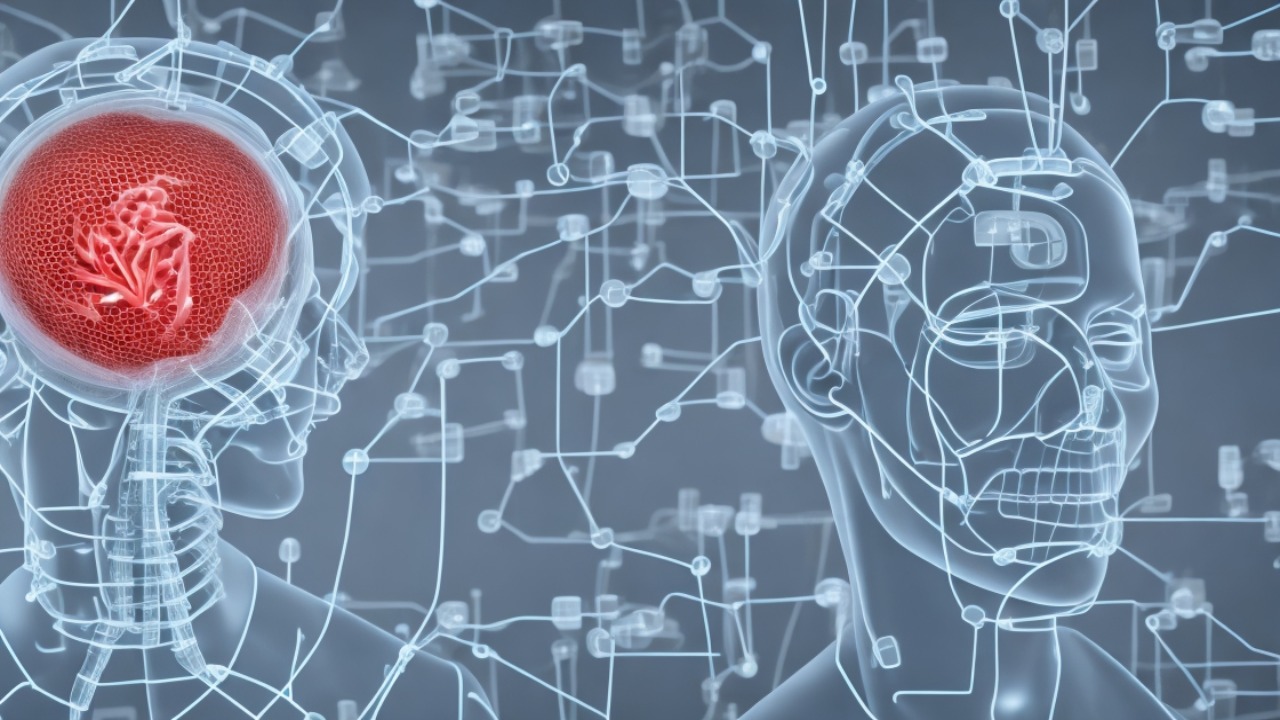Diagnostic imaging plays a crucial role in healthcare, allowing doctors to visualize and diagnose various diseases and conditions. However, the interpretation of these images can be time-consuming and subjective, leading to potential errors and delays in patient care. This is where artificial intelligence (AI) comes in.
Evolution of Diagnostic Imaging

Traditionally, diagnostic imaging relied on the expertise of radiologists to analyze and interpret medical images such as X-rays, CT scans, and MRIs. While these methods have been effective, they have their limitations. Human error, fatigue, and inconsistencies in interpreting images can impact diagnosis and treatment decisions.
Enter AI in medical imaging. With the advent of AI, medical devices companies have developed advanced algorithms and machine learning models that can analyze medical images with exceptional accuracy and speed. These AI-powered systems have the potential to revolutionize diagnostic imaging and improve patient outcomes.
AI Techniques in Diagnostic Imaging

AI techniques in diagnostic imaging encompass a range of technologies, including machine learning, deep learning, natural language processing, computer vision, virtual reality, and augmented reality. Machine learning and deep learning algorithms enable computers to learn from vast amounts of data and detect patterns that may not be readily apparent to humans.
Natural language processing and computer vision techniques allow computers to understand and interpret medical images and related text. Virtual reality and augmented reality platforms provide immersive experiences for medical professionals, enhancing their ability to visualize and manipulate medical images in real-time.
Applications of AI in Diagnostic Imaging
Image Recognition and Interpretation
One of the key applications of AI in diagnostic imaging is image recognition and interpretation. AI algorithms can analyze medical images and accurately identify and classify abnormalities, enabling earlier detection and intervention. This technology enhances the accuracy and efficiency of image interpretation, reducing the risk of misdiagnosis and allowing for timely treatment.
Furthermore, AI can assist in the detection and classification of anomalies in medical images. These AI-powered systems can highlight potentially harmful areas, improving the radiologist’s ability to identify and diagnose diseases such as cancer and cardiovascular conditions. Early detection plays a critical role in improving patient outcomes.
Decision Support Systems
AI-based decision support systems are another valuable application of AI in diagnostic imaging. These tools provide clinical decision support to healthcare professionals, assisting in diagnosis and treatment planning. By analyzing patient data and medical images, AI algorithms can suggest potential diagnoses, recommend treatment options, and predict outcomes based on similar cases.
These AI-powered systems help healthcare professionals make well-informed decisions, improving the accuracy and efficiency of patient care. They also have the potential to reduce the burden on radiologists, allowing them to focus on more complex cases and improving overall workflow in healthcare facilities.
Image Reconstruction and Enhancement
AI can also improve the quality and resolution of medical images. Image reconstruction algorithms use AI techniques to enhance the details and clarity of images, enabling better visualization of anatomical structures and abnormalities. This technology benefits both radiologists and patients by providing more accurate and informative images for diagnosis and treatment planning.
Noise reduction and artifact removal are additional applications of AI in diagnostic imaging. These algorithms can remove unwanted noise and artifacts from medical images, improving the overall image quality and reducing the need for repeat scans. This not only saves time and resources but also enhances the diagnostic accuracy of medical imaging.
Predictive Analytics
AI-powered predictive analytics is a promising application in diagnostic imaging. By analyzing large datasets and identifying patterns, AI algorithms can predict patient outcomes and assist in personalized treatment planning. For example, AI can help predict the progression of diseases, response to treatment, and potential complications.
By leveraging predictive analytics, healthcare professionals can make informed decisions, tailor treatment plans, and provide more personalized care. This technology has the potential to improve patient outcomes and optimize healthcare resource allocation.
Challenges and Opportunities in AI Implementation
While AI holds great promise in diagnostic imaging, there are challenges to its implementation. Data privacy and security concerns are paramount, as medical images contain sensitive patient information. Robust measures must be in place to protect patient privacy and ensure the secure handling of medical data.
Integrating AI systems with existing healthcare infrastructure is another challenge. Seamless integration with electronic health records and other healthcare systems is crucial for the effective implementation of AI in diagnostic imaging. Collaboration between medical devices companies, healthcare providers, and IT professionals is essential to address these integration challenges.
Ethical considerations and regulatory guidelines are also important factors in the widespread adoption of AI in diagnostic imaging. Clear guidelines are needed to ensure transparency, accountability, and unbiased decision-making in AI systems. Close collaboration between medical supply companies, regulatory bodies, and medical professionals can shape ethical AI practices in healthcare.
Future of AI in Diagnostic Imaging
The future of AI in diagnostic imaging looks promising. Advancements in AI technology, coupled with ongoing research and development, will likely lead to further improvements in accuracy, efficiency, and patient outcomes.
Collaborations between technology and healthcare industries will play a vital role in driving innovation and implementing AI solutions in diagnostic imaging. Medical devices companies, medical supply companies, and healthcare providers need to work together to ensure the successful integration of AI technology into routine clinical practice.
In conclusion, AI has the potential to revolutionize diagnostic imaging, enhancing accuracy, efficiency, and patient outcomes. From image recognition and interpretation to decision support systems, AI-powered solutions are transforming the way we analyze and interpret medical images. While there are challenges to overcome, the opportunities for AI in diagnostic imaging are vast, offering immense potential to improve healthcare delivery.



